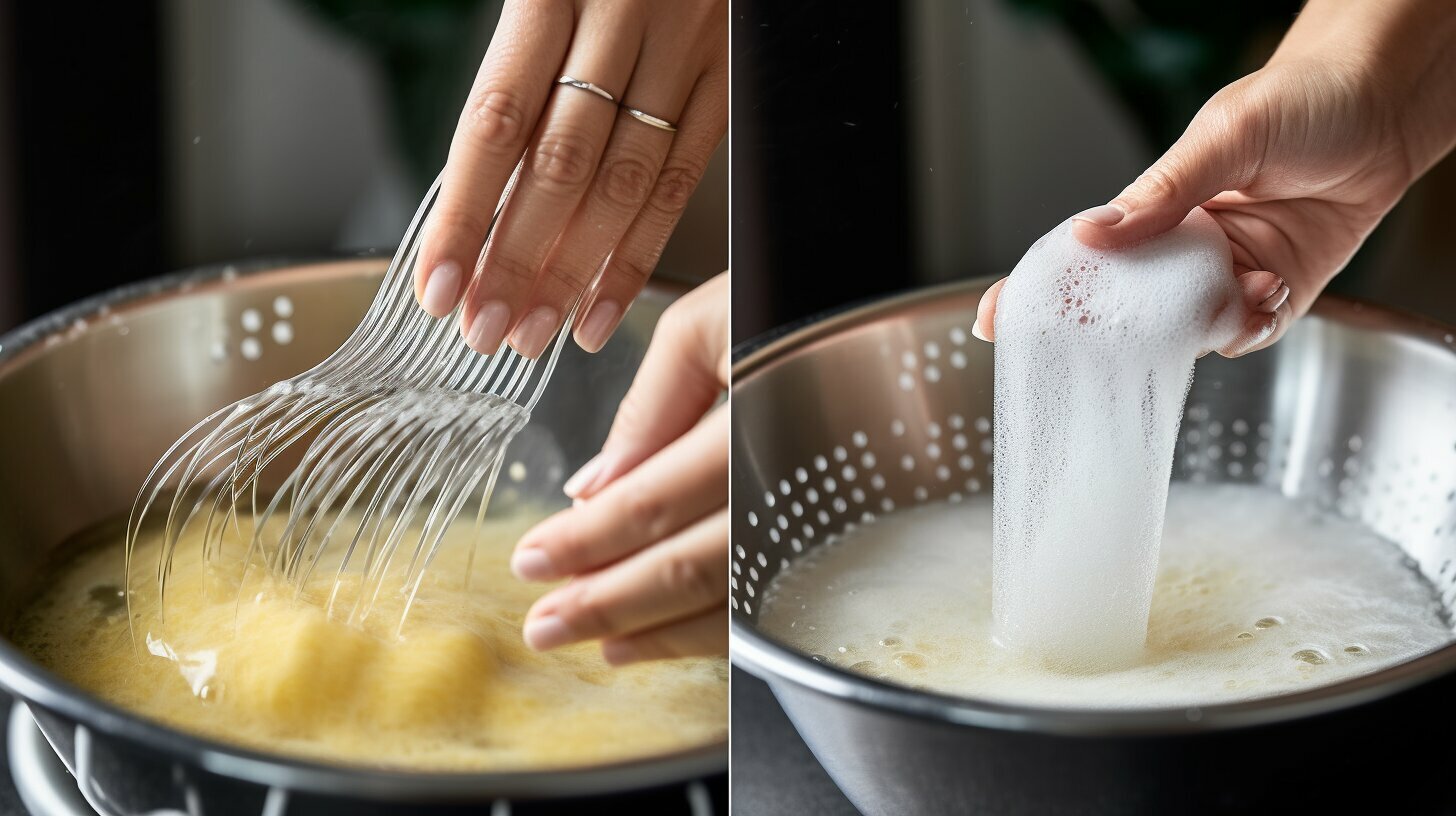Are you tired of using store-bought liquid soap that comes in plastic bottles? Or perhaps you have a collection of unused bar soap that you’d like to repurpose? Look no further! In this article, I will share with you an easy DIY guide on how to make liquid soap from bar soap.
Making liquid soap from bar soap is a sustainable and cost-effective option. By reducing plastic waste and repurposing unused bar soap, you can save money and contribute to a greener planet.
In the following sections, I will provide step-by-step instructions, tips and tricks, and suggestions for customizing your homemade liquid soap. Let’s get started!
Key Takeaways:
- Making liquid soap from bar soap is a sustainable and eco-friendly option.
- It’s a cost-effective way to reduce plastic waste and repurpose unused bar soap.
- Stay tuned for our step-by-step guide, tips and tricks, and suggestions for customization.
Why Make Your Own Liquid Soap?
Have you ever thought about making your own liquid soap from a bar of soap? It’s a great way to reduce your environmental footprint and save money at the same time. By converting unused bar soap into liquid soap, you can avoid throwing away plastic bottles that commercial liquid soap often comes in.
Not only is making your own liquid soap an eco-friendly option, but it’s also cost-effective. By using a bar of soap you already have, you can create a new product without spending any extra money. Plus, you can customize your homemade liquid soap by adding scents, colors, and additional ingredients that suit your preferences.
If you’re looking for a fun and easy DIY project, making liquid soap from bar soap is definitely worth trying!
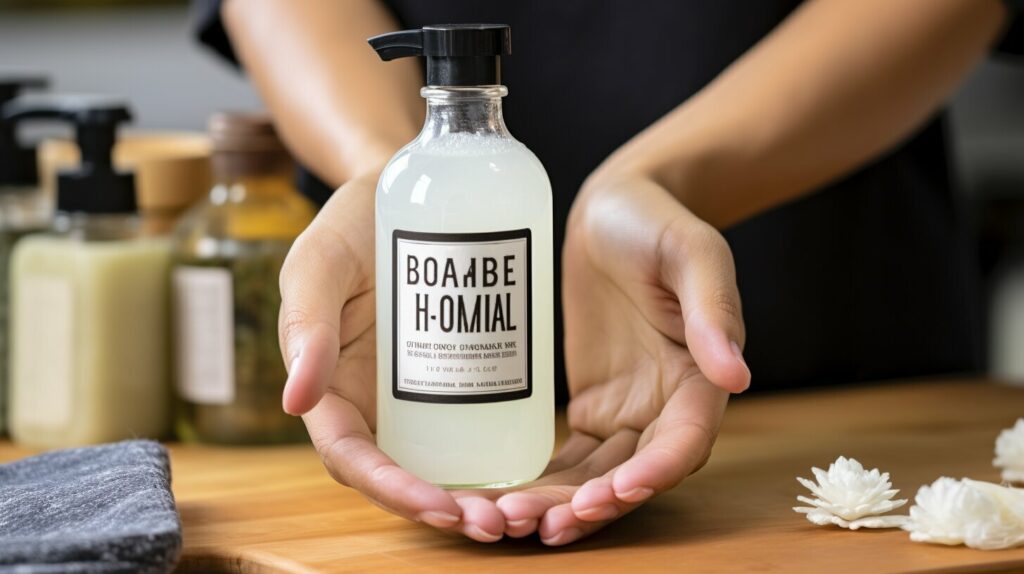
“Not only is making your own liquid soap an eco-friendly option, but it’s also cost-effective.”
What You’ll Need
Before diving into making your own liquid soap from bar soap, you’ll need a few things:
| Ingredients: |
|
|---|---|
| Equipment: |
|
It’s important to choose a bar soap that doesn’t contain added moisturizers, as these can affect the consistency of the liquid soap. Some types of bar soap that work well for this DIY project are castile soap, glycerin soap, and natural soap bars. Additionally, if you want to add some fragrance to your soap, you can use a few drops of essential oils of your choice.
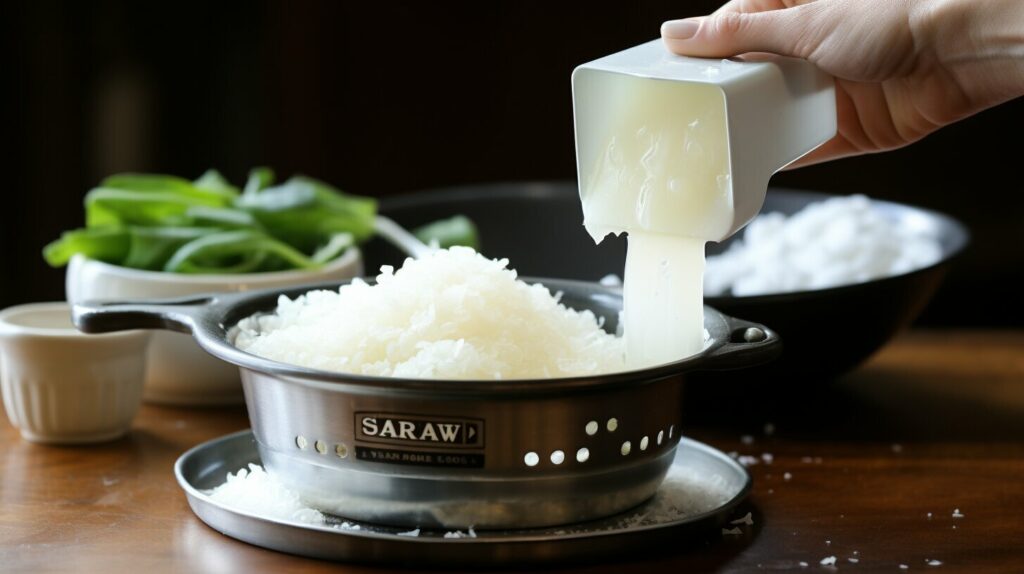
Step-by-Step Guide to Making Liquid Soap
Now that you have all the necessary ingredients and equipment, let’s start making liquid soap from bar soap. Follow these easy steps:
- Grate the bar soap into a bowl. You can use a regular cheese grater or a food processor to do this quickly.
- In a separate pot, boil water. Once the water has reached boiling point, remove it from heat and pour it over the grated bar soap. Stir until the soap has dissolved completely. This mixture will look milky and lumpy.
- Heat the mixture over low to medium heat. Use a whisk to mix the soap and water together until it becomes smooth and even in consistency.
- Add any additional ingredients such as essential oils or glycerin and continue stirring until they are fully combined. Remember to refer to your chosen liquid soap recipe for measurements and instructions on which ingredients to add.
- Allow the mixture to cool for a few minutes and then transfer it to a soap dispenser using a funnel. Make sure the dispenser is clean and dry before use.
- Shake well before each use. Your homemade liquid soap is now ready to use!
It’s important to note that the consistency of your liquid soap may differ depending on the type of bar soap you use. If the mixture is too thick, add more water. If it’s too thin, add more grated bar soap to thicken it up. Additionally, if you prefer scented soap, opt for a bar soap that already has a fragrance to save time and effort.
Remember, making liquid soap from bar soap may take some trial and error before you find the perfect recipe that suits your preferences. Don’t be afraid to experiment, and don’t give up if your first batch doesn’t turn out exactly as expected.
Pro Tip:
Add a splash of color to your liquid soap by using a natural food dye such as beet juice or carrot juice. This is a great way to personalize your soap and give it a unique touch.
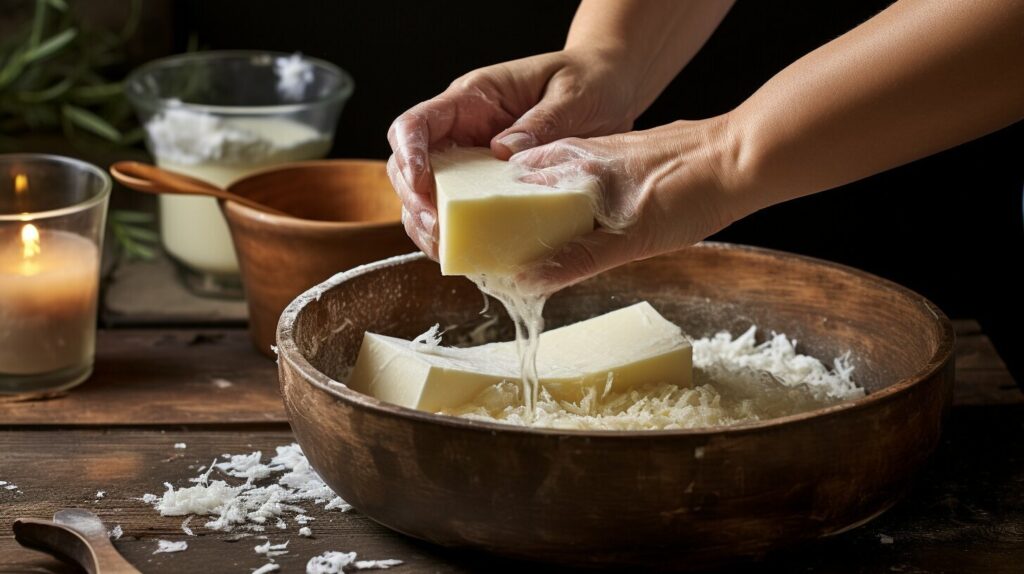
Tips and Tricks for Success
If you follow the steps outlined in the previous section, you should have no problem making your own liquid soap from bar soap. However, here are some additional tips and tricks that can help ensure success:
- Choose the right bar soap: Not all bar soaps are created equal, and some may not work well for making liquid soap. Look for a bar soap that is free of additives and moisturizers, as these can affect the consistency of the final product.
- Adjust the consistency: If your liquid soap is too thin, you can thicken it by adding a small amount of salt. Conversely, if it is too thick, you can thin it out with a bit of distilled water.
- Avoid over-scenting: While it may be tempting to add a lot of essential oils for a strong scent, doing so can actually irritate the skin. Stick to just a few drops of your favorite essential oils for a subtle fragrance.
By keeping these tips in mind, you’ll be well on your way to making your own homemade liquid soap with ease.
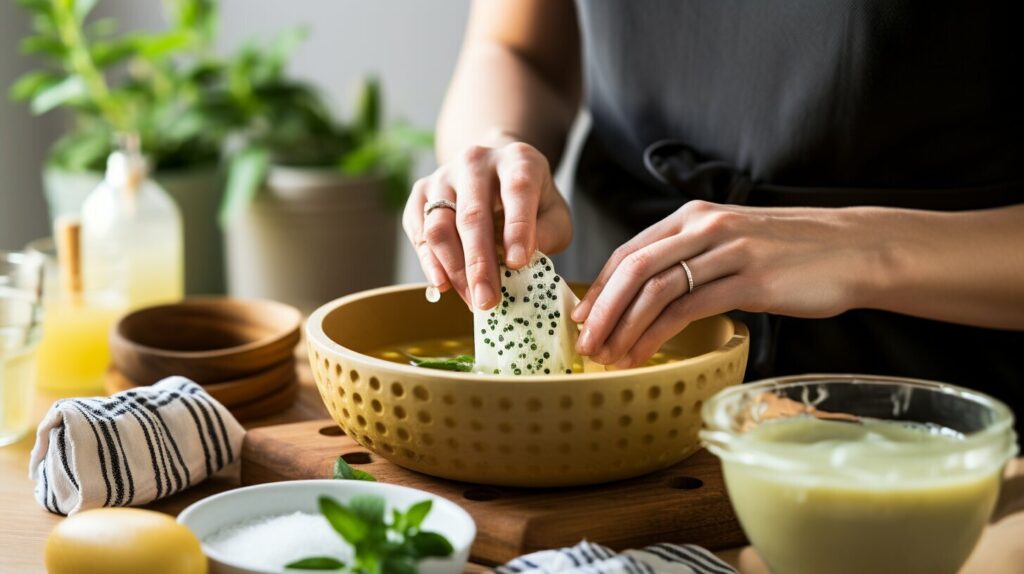
Customizing Your Liquid Soap
If you’re looking to add a personal touch to your homemade liquid soap, there are plenty of ways to customize it. Here are a few ideas to get you started:
| Customization Idea | Steps |
|---|---|
| Add Essential Oils |
|
| Add Color |
|
| Add Additional Ingredients |
|
Remember to test your customized liquid soap before using it extensively. Essential oils and other ingredients can affect the consistency and scent of the soap, so adjust as needed to achieve your desired result.
Get creative with your customizations and have fun experimenting with different scents, colors, and ingredients.
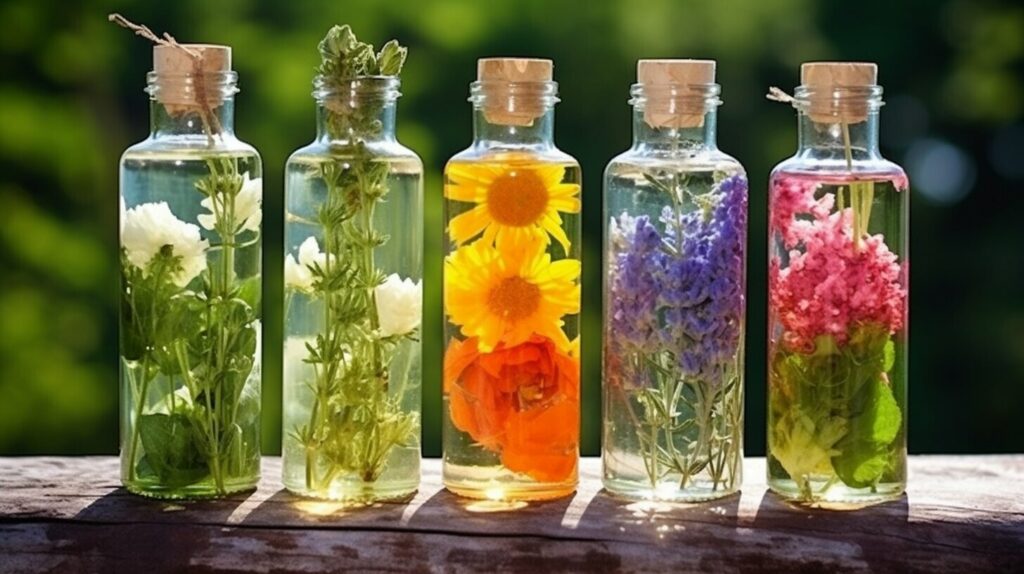
Storing and Using Your Homemade Liquid Soap
Once you have made your own liquid soap from bar soap, it’s important to properly store and use it to maximize its benefits. Here are my tips:
1. Choose appropriate containers. Store your liquid soap in a clean, dry container with a tight-fitting lid. Glass or plastic containers work well, but make sure they are not too large to handle easily or too small to accommodate your soap. (Pro Tip: Consider reusing old glass jars or plastic bottles to reduce waste.)
| Container Type | Pros | Cons |
|---|---|---|
| Glass Jars | Durable, eco-friendly, easy to clean | May break if dropped, not travel-friendly |
| Plastic Bottles | Lightweight, shatterproof, travel-friendly | May not be recyclable, can absorb odors |
2. Label your soap. Use a permanent marker or label to clearly indicate the contents of your container, including the type of soap used and any added ingredients or scents. This will help you easily identify your soap and prevent confusion.
3. Use your soap effectively. When using liquid soap, a little goes a long way. Use a small amount on a loofah or washcloth to create a lather, then apply to your skin in circular motions. Rinse thoroughly with warm water and pat dry. (Pro Tip: Avoid using hot water, as it can dry out your skin.)
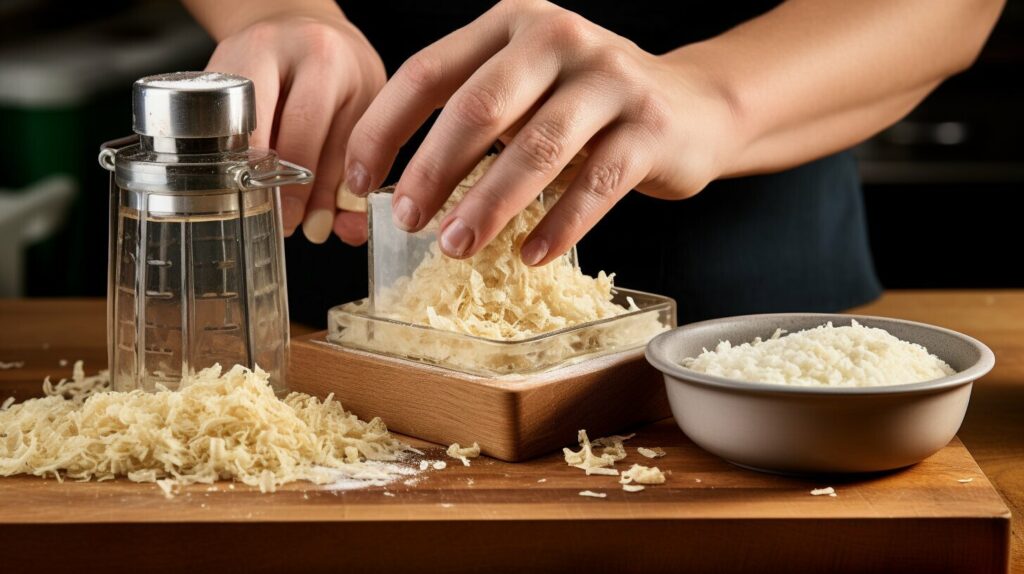
4. Adjust the consistency if needed. If your liquid soap is too thick or too thin, you can easily adjust it. To thicken your soap, add a small amount of salt and stir until dissolved. To thin your soap, add a bit of water and stir until well combined. (Pro Tip: Test the consistency frequently to prevent over-thickening or over-thinning.)
5. Don’t be afraid to experiment. Making your own liquid soap from bar soap is a fun and customizable process. Feel free to add scents, colors, or additional ingredients to create unique variations that suit your preferences. (Pro Tip: Take note of the ingredients and measurements you use for future reference.)
Ways to Repurpose Unused Bar Soap
Don’t throw out any remaining unused bar soap after making your own liquid soap! There are plenty of creative ways to repurpose it instead of letting it go to waste.
- Soap Balls: Roll the leftover soap in your palms until it forms a ball. Use it in the shower or bath just like you would with any other soap.
- Sachets: Wrap small pieces of soap in fabric scraps and tie with a ribbon to make sweet-smelling sachets for your drawers or closets.
- Cleaning: Use grated soap to make a natural, non-toxic cleaning solution for your home. Mix it with baking soda and warm water to create a thick paste that works great on sinks, tubs, and other surfaces.
With just a little creativity, you can turn your unused bar soap into something useful and practical. Plus, it’s a sustainable way to reduce waste and make the most out of your soap supply.
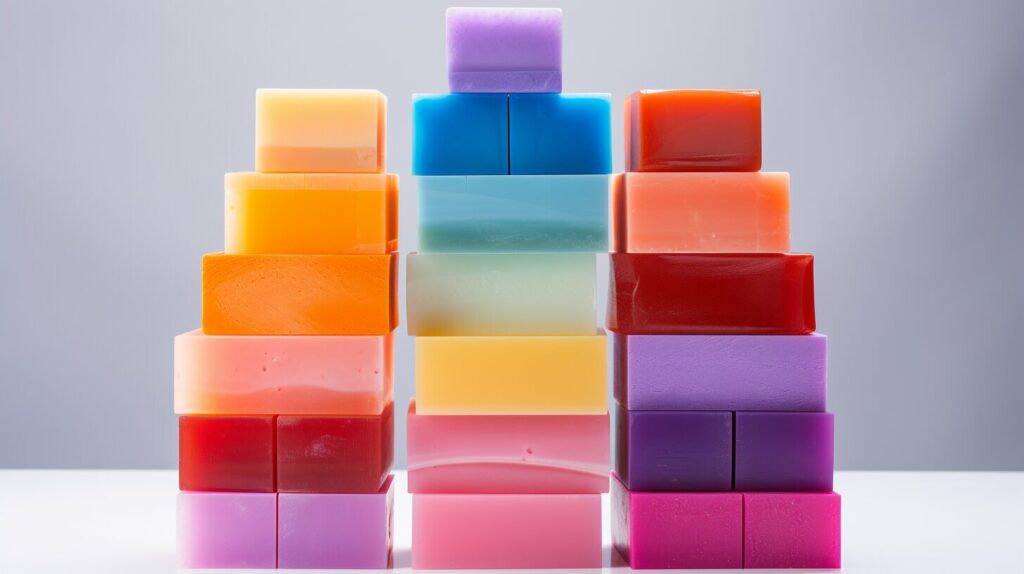
Conclusion
After making my own liquid soap from bar soap, I am convinced that it is a game-changer. Not only is it an eco-friendly option, but it is also a cost-effective way to ensure that no unused soap goes to waste.
By using the simple recipe and easy-to-follow instructions outlined in this article, I was able to make my own liquid soap in no time. Plus, I had fun customizing it to suit my preferences with different scents and colors.
Storing and using the liquid soap is also easy. I found that using a pump container kept it tidy and made it convenient for daily use. And with the added bonus of knowing exactly what goes into my soap, I can feel good about what I’m putting on my skin.
If you’re looking for a fun and sustainable way to make your own soap, give this DIY liquid soap recipe a try. You may be surprised at how easy and rewarding it is!

